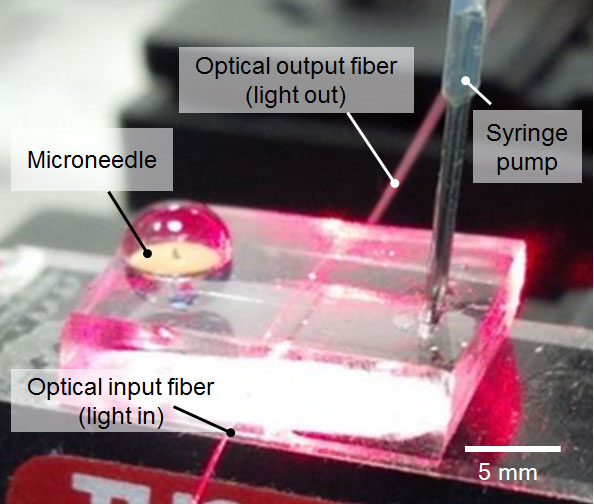Microneedle can monitor vancomycin levels without drawing blood
From The Vancouver Sun:
 Researchers at the University of B.C. have created a “lab on a chip” that could spell the end of painful, multiple daily blood tests for patients on intravenous antibiotics. A microneedle — created by engineering PhD student Sahan Ranamukhaarachchi — is only one-tenth as wide as a syringe needle and practically painless. Using microfluidics and optics, the new device is designed to monitor levels of the antibiotic vancomycin without drawing blood.
Researchers at the University of B.C. have created a “lab on a chip” that could spell the end of painful, multiple daily blood tests for patients on intravenous antibiotics. A microneedle — created by engineering PhD student Sahan Ranamukhaarachchi — is only one-tenth as wide as a syringe needle and practically painless. Using microfluidics and optics, the new device is designed to monitor levels of the antibiotic vancomycin without drawing blood.
Vancomycin is given intravenously to treat meningitis, complex skin infections, inflammation of the heart and bloodstream infections. However, antibiotics like vancomycin can have dangerous side-effects if their levels in the blood aren’t closely controlled.
People taking vancomycin may be tested three or four times daily by drawing blood, which is time-consuming for patients and medical staff, and painful for patients. And according to UBC research, there are at least 10 other drugs used by millions of patients worldwide that could be monitored using this non-invasive technology.
The inside of the microneedle is prepared to bind with vancomycin and then used to draw a tiny amount of fluid from just below the skin, without piercing the way a needle does. A second fluid changes colour in response to the amount of vancomycin present. A weak laser detects the colour change and reliably predicts the level of the drug in the patient’s bloodstream.
Read the summary article on The Vancouver Sun website
From UBC: The microneedle monitoring system, described in a paper published earlier this month in Scientific Reports, was developed out of a research collaboration between Hafeli and Boris Stoeber, a professor in UBC’s faculty of applied sciences, and is being commercialized by the UBC spin-off Microdermics Inc.
Read the full media release on the UBC website

